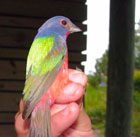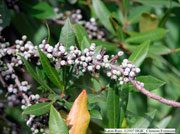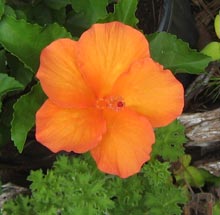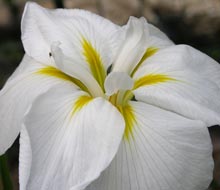Recently, while visiting a friend who lives in a rural island area of Beaufort County, I gasped at the sight of a colorful bird I had never seen before at the birdbath.
 Turns out it was a rare Painted Bunting, often called the ‘most beautiful songbird in America.’ Amazingly, the Lowcountry, Beaufort County in particular, is the heart of their breeding range, with the area from Highway 17 to the sea producing more than 50% of new baby buntings born in the entire world!
Turns out it was a rare Painted Bunting, often called the ‘most beautiful songbird in America.’ Amazingly, the Lowcountry, Beaufort County in particular, is the heart of their breeding range, with the area from Highway 17 to the sea producing more than 50% of new baby buntings born in the entire world!
Painted Buntings, a type of finch, are neotropical migrating songbirds; they spend winters in South Florida, the Bahamas, and Cuba and come back here to breed and hatch their eggs between the months of April and June.
Sadly, yearly bird counts have shown steep population declines since 1970. Populations are down almost 60 percent since 1970. At that rate, this beloved song bird will be gone in less than 30 years. Within our lifetime, the painted bunting may sing its last song.
But as an optimist, I believe it isn’t too late to make a united effort to save this bird. It is now listed as ‘critical’ and is the steepest declining, high priority species within the Southeastern U.S. – which is just a step above being listed as ‘Endangered.’
And because our area supports nearly half of the world’s breeding population for the Eastern Painted Bunting, we play a crucial role in the future conservation of this amazing species of one of the world’s most splendid songbirds.
What can we all do?
Lots of things. First, get a little collar bell for your cat if it goes outdoors. Feral cats and unfettered outdoor cats are one of the number one killers of songbirds. And the feral cat population on the islands in Beaufort County has exploded in the past few decades. The island I live on for example, Port Royal, which contains the town of Beaufort and Port Royal, is completely overrun with them. There’s a feral cat living on nearly every block now. Feral cats aren’t ‘cute house cats’ (which I love and even have), and they aren’t ‘nice;’ they are songbird killing machines and even if someone feeds them, they still kill. I’ve got a dead Mockingbird in my garden which I watched my neighborhood feral cat kill. Plus, they are conduits for rabies and toxoplasmosis to your children and domestic pets . Last year on Lady’s Island, five people were exposed to rabies from a feral cat that the neighbors were feeding. Beaufort County needs to implement a strong program for the control of feral cats on the islands possibly by creating fenced colonies manned by volunteer feeders. We have an obligation to the world not to let feral cats keep killing our songbirds… or worse. 
Second, songbirds love a source of water. You might think about putting out a bird bath or something that holds water, and make sure it is high enough off the ground that cats can’t hide under it or in nearby bushes.
Third, feeders help. Painted Buntings like White Proso millet. Not the Red millet and not mixtures of red and white. They also like Black Seeded Sunflower seeds as the shells are thinner than the white stripped. I am told for the millet, to get tube feeders that include cages to keep the cowbirds out. Also, organic seed is better, as pesticides kill 6 million birds a year in the U.S. Check sources online or go to one of the two Savannah Food coops and see if they have it in their bulk grain bins.
Finally, let’s focus on improving Painted Bunting nesting habitat. You can add a few changes to your yard to make it ideal for songbirds. The good news is that Painted Buntings aren’t negatively affected by housing developments as other species are. They dislike deep woods and big open fields, What they love is sort of a combo of both. Tall trees with open spaces. Which describes most of our yards. What is often missing (or was removed) is the important shrub layer, where birds like to hide for protection. When I say ‘Shrub layer’ I mean all those plants that grow about 10 – 15 feet tall. Plants found in high bunting breeding areas are our native Yaupon, Wax Myrtle, Southern Red Cedar, Saw Palmetto, Cabbage Palmetto, sweetgrass and other native grasses. Greenbriar (smilax), Muscadine, & Loblolly pines.
Here are the recommendations of University of Georgia’s Wildlife Biologist Joe Meyers:
“Fleshy fruits from shrubs are an excellent energy food for Buntings and are used heavily in late summer and fall, just before the birds migrate. For breeding Painted Buntings, grassland habitat and shrubs, especially wax myrtle, are important. Wax myrtle is used for nesting in >50% of nests, along with thick grass (Cane, Arundenaria) or rattan vines, or any thick clump of shrub can be used. Spanish Moss is used for about 10% of nests on coastal areas in maritime oak forest edges and openings. Native and non-native grasses are used for forage in late April (green seeds are used and are high in protein). The foraging habitat for insects that grasses provide is even more important. Buntings feed mostly on the ground. On Sapelo Island, Muhley grass (Mulenbergia filipes common native on coastal areas and a very attractive grass in late summer) provided habitat for grasshoppers and as soon as these small grasshoppers emerged the bunting began to nest (early May). Buntings forage in the salt marsh, too and probably feed on salt marsh grasshoppers a lot. Seaside panicum is also a good grass. Native grasses are difficult to find in cultivation, but do volunteer readily in good habitat. An excellent reference for this is Wilbur and Marion Duncan’s 1987 paperback “The Smithsonian Guide to Seaside Plants of the Gulf and Atlantic Coast” Smithsonian Institution Press, Washington, DC. It’s out of print, but available on Amazon for about $40 ($10 more than in 1997 when I purchased). It is worth it for sure.”
 So it sounds like planting one or more Southern Wax Myrtles in your yard in clumps around trees is the way to go towards creating a Painted Bunting sanctuary. Wax myrtle (Myrica cerifera) is native to South Carolina.
So it sounds like planting one or more Southern Wax Myrtles in your yard in clumps around trees is the way to go towards creating a Painted Bunting sanctuary. Wax myrtle (Myrica cerifera) is native to South Carolina.
Here are some other comments I found online about the Wax Myrtle:
“I have 3 large (12-20′) wax myrtles in my yard and the birds love them. Each tree has at least one bird’s nest, sometimes more. The birds also seem to love the seeds so it’s a home with a built in food supply.”
“An excellent landscape shrub or small tree. I have used them as entry plantings instead of the overused and harsher hollies. Collect seeds as soon as ripe in early-mid autumn. Remove waxy coating and plant in cold frames. Seeds will benefit from several weeks of cold stratification.”
“Wax myrtles have a wonderful lavender-like fragrance when rubbed or brushed, and make excellent specimens when allowed to develop into a small tree. I have some between 15-20 ft. on my farm, and they develop great branching character as they mature.”
“The Wax Myrtle is deer resistant, heat and drought tolerant, and grows freely in poor soil. The woody stem shapes can be as interesting as the trimmed foliage. Seeds are small and aromatic; new seedlings emerge beneath established plants.”
“The wax myrtle responds well to pruning, has attractive evergreen foliage and is a fast grower. The berries are a food source for birds in the winter. It repels insects, (particularly fleas); was often planted around southern homes to keep the fleas out. A sprig in a closet or drawer will keep out cockroaches.”
So if your local Garden Center or nursery does not have Wax Myrtles for sale, ask them to order you some. (And just the original Southern Wax Myrtle variety, not the dwarf ones). You can also contact your local Native Plant Society which have seasonal sales on native plants.
Our only local native plant nursery is Naturescapes, run by botanist Daniel Payne on Coosaw Island (off Lady’s Island). He’s got a wide range of native plants and grasses and he’s also available for consultations. Individuals or groups can call for an appointment to see the nursery. (843) 525-9454 or email danielpayne@embarqmail.com.
If you burn undergrowth on your land to increase wildlife populations, note that painted buntings do best on a 3-6 year burn cycle. Not a yearly one.
If you would like to get involved with a local group that is starting to organize to help save the Painted Bunting then email your contact info to: sweeneylan@yahoo.com with the subject header: Painted Bunting.
If you want to be involved with yearly bird counts and population monitoring, then contact The Painted Bunting Observer Team at: www.paintedbuntings.org/faq
This group would love to hear from you if you spot a breeding pair in your backyard.
I truly believe it’s not too late to save our Painted Bunting. It really depends on small changes we can all undertake. If enough of us do, then the song of this beautiful bird will be heard by your grandchildren… and hopefully even their grandchildren.







